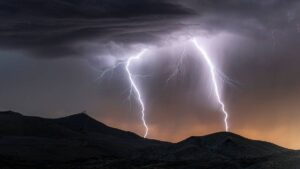Here’s why Western Australia is the place to be for nickel

Nickel is heading into more batteries but why is Western Australia the place to be for finding it? Pic: Getty Images
Nickel has been the talk of the town in recent weeks thanks in no small part to electric vehicle (EV) trailblazer Tesla saying that it plans to increase the use of nickel in its EV batteries to improve energy density and reduce cost.
And the car manufacturer could make a significant dent in nickel supplies with Wood Mackenzie estimating that Tesla could need up to 1.15 million tonnes of nickel a year — almost 50 per cent of current global supply — by 2030 if its ambitious plans are met.
To top it off, McKinsey has estimated that just 46 per cent of current nickel production is suitable for use in batteries and that a lack of sulphide deposits is contributing to a shortage of “Class 1” nickel that contains at least 99.8 per cent nickel.
While it is unlikely that the car manufacturer will achieve those goals thanks to competition from other battery manufacturers, it provides a very attractive picture of where the nickel sector is headed.
But there are still a couple of years to go before that level of nickel demand from the battery sector is achieved so just what is driving demand for the metal?
Azure Minerals’ (ASX:AZS) managing director Tony Rovira told Stockhead that the hype surrounding new generations of batteries and EVs was certainly driving renewed interest in nickel exploration and production while also driving up prices.
“However, the main consumer of nickel continues to be stainless steel and while government-boosted infrastructure projects continue to be rolled out, the demand for nickel will remain strong and support higher prices,” he added.
Nickel is currently trading at $US14,271 ($19,869) a tonne, up 27.5 per cent from its COVID-19 low of $US11,192/t at the end of March, though this is still down from the peak of about $US18,000/t it hit last year.
Western Australian nickel
With Tesla and other battery manufacturers expected to crank up their demand for nickel, particularly for higher quality Class 1 nickel, where would future nickel supplies be likely to come from?
It wouldn’t be too much of a stretch to say that a large part would come from Western Australia given that it currently hosts about 90 per cent of Australia’s total economic resources, according to Geoscience Australia.
Rovira also believes that Western Australia is the place to be for nickel explorers, saying that komatiite (Kambalda-style) extrusive lava flows and magmatic layered mafic-ultramafic intrusions, which are both nickel sulphide deposits, exist in abundance in the state.
“Komatiites have been the main source of nickel sulphides since the late 1960s and new discoveries continue to be made by brownfields exploration,” he explained.
“But during the past decade there have been several major discoveries of intrusive-hosted nickel sulphide deposits, for example in the Fraser Range Province and the Julimar and Andover Intrusive Complexes.
“This has resulted in a major resurgence in nickel sulphide exploration and new discoveries in recent years, especially for intrusive-hosted deposits.”
Small cap nickel plays
Ardea Resources (ASX:ARL) has unveiled a set of drill-ready, high-grade nickel sulphide targets at its Emu Lake project in WA’s Eastern Goldfields after undertaking geophysical studies.
Electromagnetic anomalies warranting drill testing were identified at Emu Lake by Ardea’s consultants Newexco Exploration, particularly in the Binti Gossan area where previous drilling has returned several high-grade intercepts.
The Emu project is 35km east of Poseidon Nickel’s (ASX:POS) Black Swan nickel project.
Auroch Minerals (ASX:AOU) is currently undertaking reverse circulation and aircore drilling across its Saints and Leinster nickel projects in WA’s Norseman-Wiluna Greenstone Belt as it seeks the all-important ‘feeder’ channels.
Of the 50-odd known Kambalda-style nickel sulphide deposits around Norseman-Wiluna Greenstone Belt, 48 have main ‘feeder’ channels to the deposit.
Managing director Aidan Platel previously told Stockhead the company is just “one hole away” from a re-rating event given that the feeder channel is where the thickest, highest grades of nickel are found.
Saints is already home to a 21,000t contained resource, though an initial 50,000t would be required before the company can commit to a quick dash to the finish line given that the project is on two granted mining leases and has an existing offtake agreement with BHP (ASX:BHP).
Auroch is also about to drill up the existing resource at Leinster up to JORC 2012 standards.
Meanwhile, Azure Minerals is currently drilling at the Andover nickel project, a joint venture with the Creasy Group (40 per cent) in the West Pilbara region of WA.
The 70sqkm Andover project is on similar rocks to the Fraser Range, home to the Nova-Bollinger nickel-copper mine, and the Gonneville Intrusive Complex near Perth, host to Chalice Gold Mine’s (ASX:CHN) Julimar nickel-copper-PGE discovery.
“Recent drilling by previous owner Mark Creasy discovered high-grade nickel sulphide mineralisation in at least two separate locations,” Rovira said.
“Azure is following this up with a major diamond drilling program of at least 3,000m before Christmas.
“Additional drilling is planned for next year to test the numerous geophysical targets that have been identified throughout the property. First assay results are expected within a month.”
Chalice Gold has just discovered a new platinum group element (PGE)-copper-gold horizon at its Julimar project near Perth that opens up further additional growth opportunities.
Notable intersections over a 1.2km strike at the eastern contact of the intrusion include 33m at 2.1 grams per tonne (g/t) palladium, 0.5g/t platinum, 0.2g/t gold and 0.5 per cent copper from a depth of 81m and 15m at 2.5g/t palladium, 0.5g/t platinum, 0.2g/t gold and 0.3 per cent copper from 139m.
Additionally, several new wide intersections were also made at electromagnetic (EM) conductor F at the southern end of the intrusion, such as 33m at 2g/t palladium, 0.4g/t platinum, 0.5g/t gold and 0.8 per cent copper from 236m.
These new mineralised zones remain open and further infill drilling is currently underway.
In August, DevEx Resources (ASX:DEV) and its partner Australian Silica Quartz (ASX:ASQ) completed the re-assay of historical drill samples that identified coincident elevated nickel, copper and chromium values at their Sovereign project.
These results are indicative of the presence of maficultramafic rocks, similar to the rocks of the Julimar Complex.
Separately, Australian Silica has applied for four nickel-copper leases over the Biranup zone of the Albany Fraser Mobile Belt.
ARL, AOU, AZS, CHN, DEV and ASQ share price charts
Mincor Resources (ASX:MCR) has just pressed the button on the recommencement of nickel mining at its Kambalda operations.
The final investment decision was underpinned by credit approved term sheets for a highly competitive $55m project debt facility from two tier one international banks.
Its definitive feasibility study outlined a five-year operation capable of producing a total of 71,000t of nickel and 5,000t of copper for pre-production CAPEX of $68m.
Commercial mine development and surface construction is expected to be in full swing during the current quarter with production expected early in December 2021.
First ore delivery to the BHP Nickel West Kambalda Nickel Concentrator and first nickel concentrate production is expected in the March 2022 quarter.
Rox Resources (ASX:RXL) is currently waiting on results from reverse circulation drilling at its Fisher East nickel project in WA’s highly prospective Yilgarn Craton.
Fisher East currently hosts a resource of 4.2 million tonnes grading 1.9 per cent nickel, for 78,000t of contained nickel, at the Camelwood, Musket and Cannonball deposits that remain open at depth.
Work carried out earlier this year also uncovered five targets in a previously unexplored belt parallel to the Yilgarn Craton.
Sultan Minerals (ASX:SLZ) has started reconnaissance ground work for nickel-prospective ultramafic rocks within identified magnetic anomalies at its Lake Grace project in Western Australia.
This is aimed at finding Julimar-style nickel sulphide targets.
Historical drilling at Lake Grace has intersected ultramafic rocks with evidence of nickel and cobalt bearing sulphides, while airborne magnetic surveying by the company has revealed several unexplored areas with geophysical characteristics indicative of ultramafic rock types.
Additionally, there is strong geophysical evidence for more than 25km of cumulative strike length of ultramafic rocks across the company’s Lake Grace portfolio.
Areas with confirmed ultramafic rocks or geochemical anomalies that indicate likely ultramafic occurrence will be followed up with detailed grid-based soil or shallow drill sampling.
EM surveys will also be used over bodies of verified ultramafic rocks to locate any buried conductive bodies.
Gossan rock sampling at Thor Mining’s (ASX:THR) greenfields Pilbara tenements indicate the gossan — the ‘outcrop’ of a mineral vein or orebody — is strongly anomalous for nickel over the entire 900m length.
The gossan is between 70 and 100m wide, although the full width is “obscured by steep slopes and scree”, the company says.
All 49 rock chip samples were anomalous for nickel, with a peak value of 2,678 parts per million (ppm) nickel. Chromium also averaged 1,230 ppm across the 49 samples.
MCR,RXL,SLZ and THR share price charts
At Stockhead we tell it like it is. While Auroch Minerals, Azure Minerals, Rox Resources, Sultan Minerals and Thor Mining are Stockhead advertisers, they did not sponsor this article.
Related Topics
UNLOCK INSIGHTS
Discover the untold stories of emerging ASX stocks.
Daily news and expert analysis, it's free to subscribe.
By proceeding, you confirm you understand that we handle personal information in accordance with our Privacy Policy.








